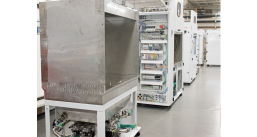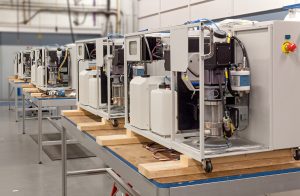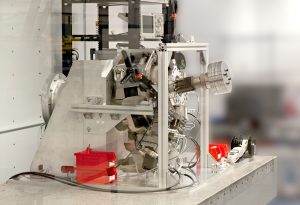As a contract manufacturer specializing in equipment, instrumentation, and machinery, we excel in CNC machining (i.e., milling, turning, wire EDM) across a wide range of materials. Stainless steel is among the most commonly requested materials we work with due to its versatility and durability. SS alloys such as 304, 316, 316L, and 430 are prevalent in great CNC machine shops and find extensive applications in critical industries like Aerospace, Defense, Medical, Energy, and Semiconductors. These sectors demand stringent standards ranging from sterile surfaces to harsh environmental conditions where stainless steel shines. Due to the chromium content of stainless steel, this material does not rust and corrode very readily. However, this material also presents unique difficulties during the machining process and requires precision and expertise to achieve the desired results. It is essential to follow best practices and employ advanced techniques to effectively overcome the complexities associated with machining stainless steel.
Stainless Steel Machining Tips:
- Utilize robust and rigid tooling: Given the hardness of stainless steel, it is vital to use tooling that is durable and capable of withstanding the material’s toughness.
- Ensure rigid workholding devices: To minimize the impact of vibration, it is essential to use workholding devices that are robust and resistant to vibration, ensuring stability during the machining process.
- Opt for High Speed Steel (HSS) tools: Tools made of materials such as tungsten or molybdenum HSS are excellent choices for stainless steel machining, offering the necessary toughness and durability.
- Choose tougher end mills: When dealing with edge chipping, consider using tougher end mills that can withstand the demands of stainless steel machining to help maintain the integrity of the workpiece.
- Deploy Cemented Carbide tools: When higher feeds and speeds are required, Cemented Carbide tools are highly effective for achieving efficient and precise machining.
- Utilize coated cemented carbides: Coated cemented carbide tools can significantly improve wear resistance and reduce the risk of breakage during machining processes.
- Optimize cooling for specific operations: Choose the most suitable cooling method for your specific stainless steel machining operation to prevent overheating and ensure smooth machining operations.
While stainless steel may not be the hardest metal to machine, it does require careful handling to achieve the precise tolerances and finishes required. Whether you choose to do CNC machining in-house or outsource it to a vendor, it is crucial to select a shop with extensive capabilities and experience working with stainless steel. The right tools, techniques, and knowledge play a vital role in achieving high-quality results.
At PEKO, we take pride in our arsenal of over 85 CNC machines of varying sizes and horsepower, allowing us to optimize the machining process for any material, size, and shape requirements. By strictly adhering to best practices and drawing upon our vast experience in stainless steel machining, we ensure superior quality and performance for our clients spanning diverse industries. If you’re looking for high-quality CNC machining of stainless steel tailored to your specifications, don’t hesitate to reach out to us today.








